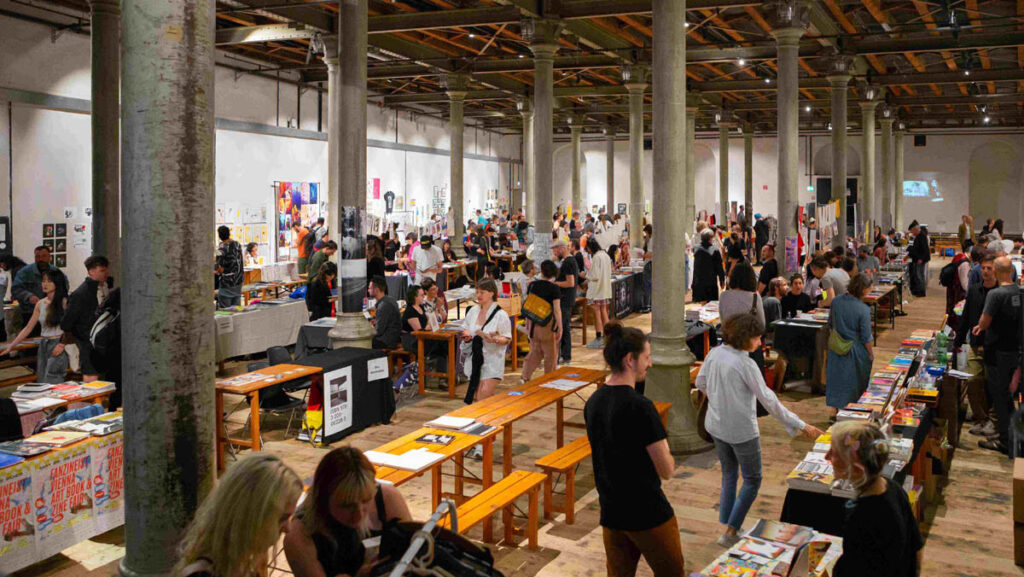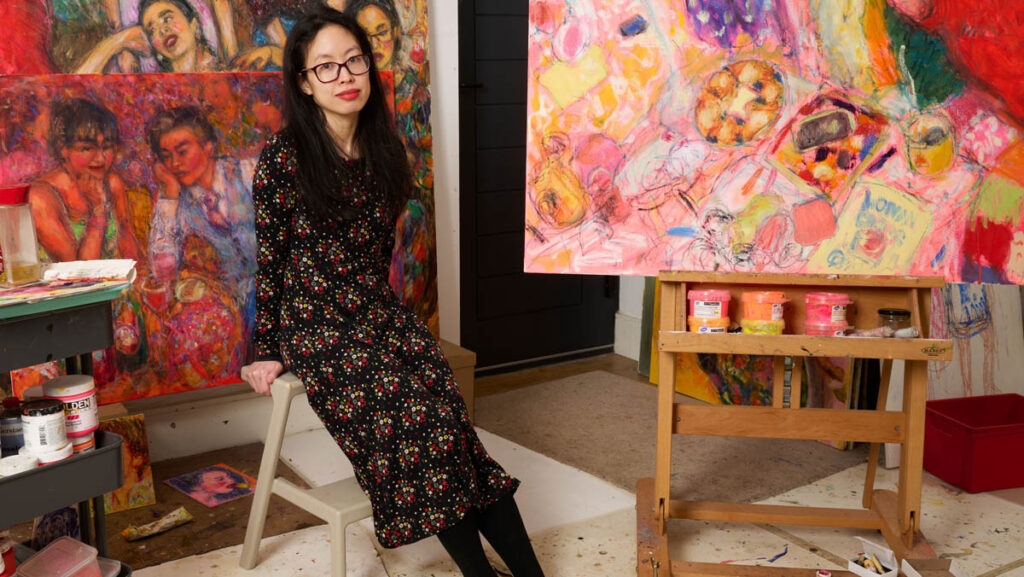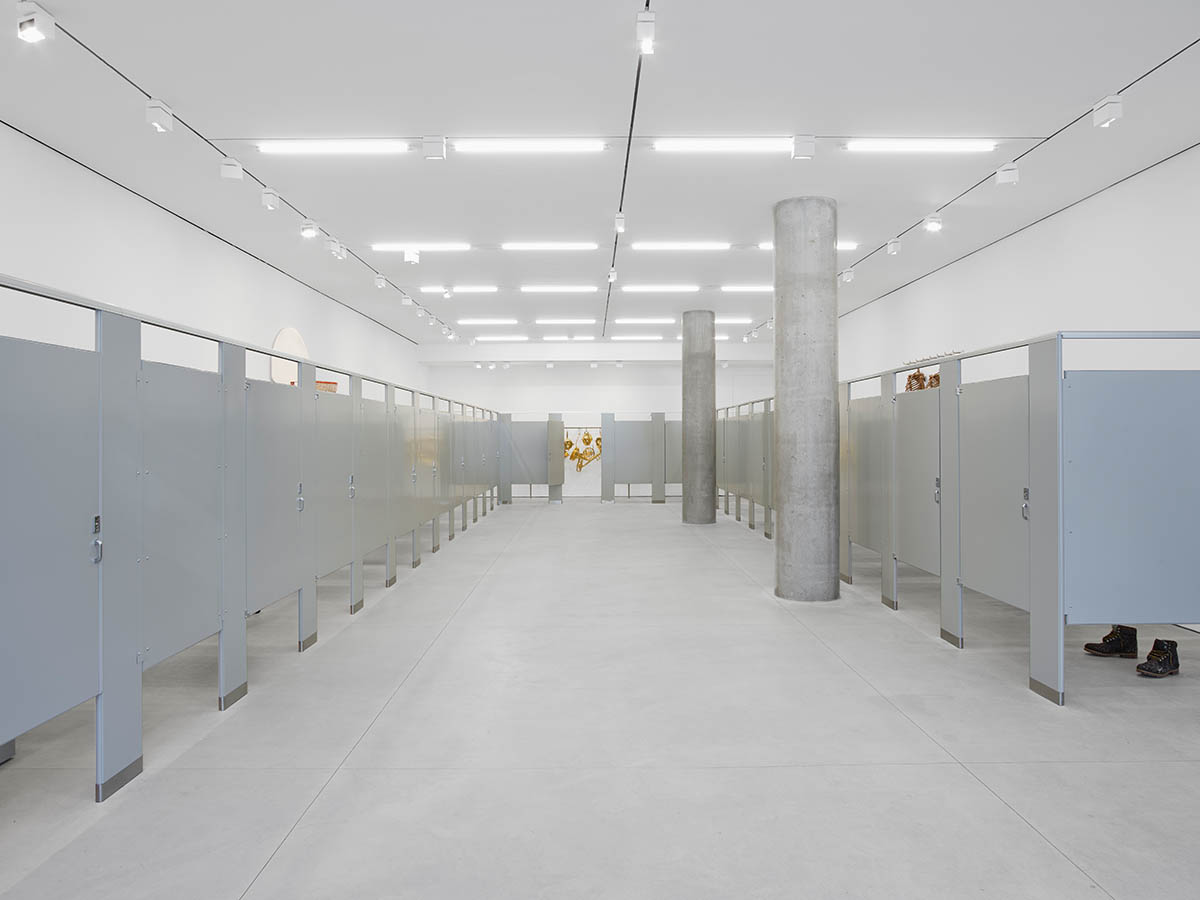
Known for his poignant metaphors and examinations of human existence, Hayden’s work transcends individual experience to probe the collective consciousness. Hughmans maintains his signature use of wood as a primary medium alongside bronze, resin, and silicone, amplifying the depth and texture of his narrative. At the heart of the exhibition lies an ambitious site-specific installation, unraveling the complexities of power dynamics in contemporary society. Hayden transforms mundane elements into profound symbols, inviting viewers to confront their own perceptions and assumptions of daily life.
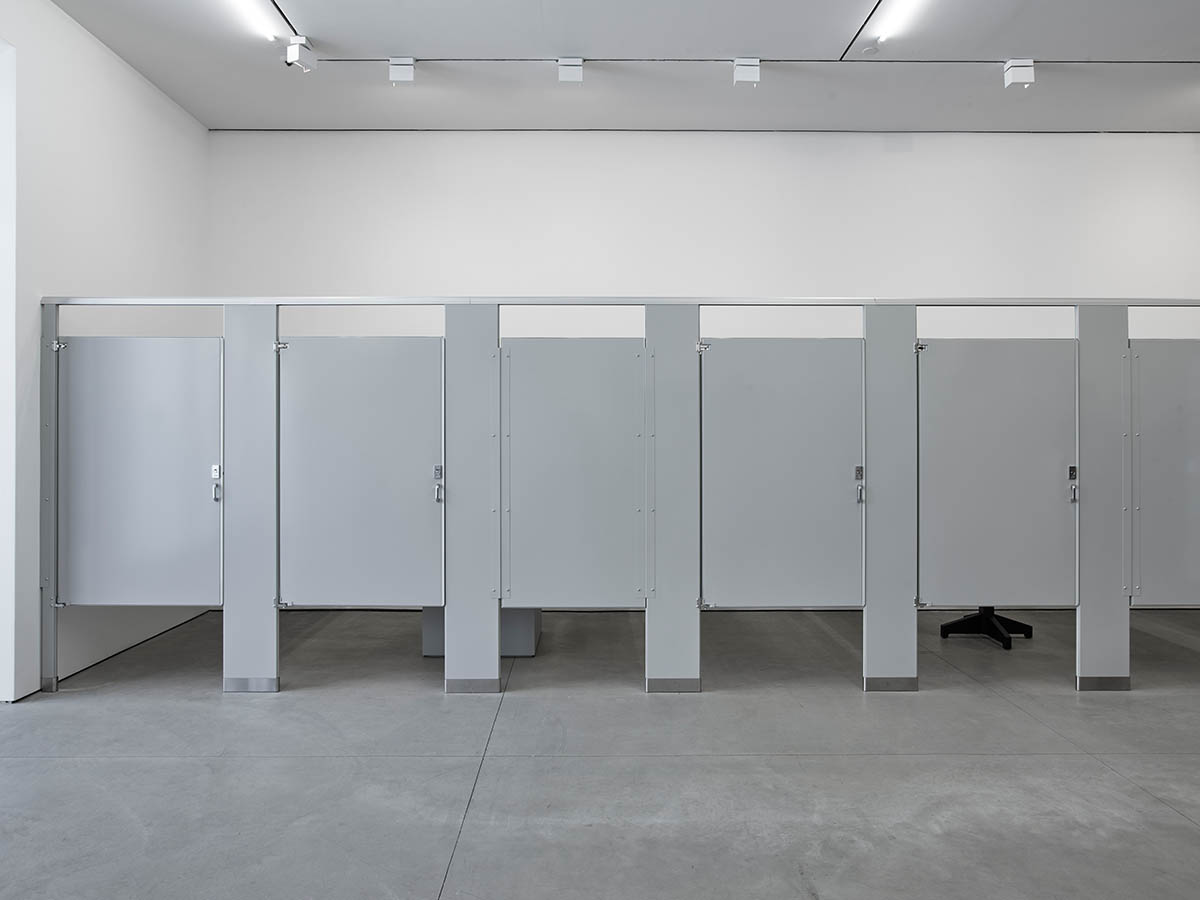
In the gallery, visitors will find an arrangement of metal bathroom stalls, each concealing an artwork within. This unconventional setup challenges notions of privacy and intimacy, urging viewers to reconsider their relationship with public spaces. Two wooden sculptures embodying the fictional character Pinocchio will be exhibited. Ebanocchio (2024) and Nocecchio (2024) serve as contrasting counterparts, one crafted from ebony and the other from walnut. In the original fairytale, Pinocchio’s name was also derived from his physical, wooden origin, ‘Pino’ being the Italian term for pine. These works employ Hayden’s recurring conceptual gesture of wood and the intersection of materiality and identity. The artist recently unveiled another sculpture, Geppetto (2023), in his comprehensive exhibition, American Vernacular, at the Laumeier Sculpture Park. Named in reference to Pincocchio’s father, the work serves as an antecedent to the pieces showcased in New York. Like much of Hayden’s ouvre, the fantastical story of the marionette is often attributed as a metaphor for the human condition.
In another stall, the artist will present Harlem (2024), a new set of cast melting pots – works which serve as a metaphor for the creation of America through cultural diversity. These particular sculptures will depict both facial features and functional musical instruments, a new reference Hayden has begun to explore in this medium. This iteration of melting pots, made using sandcast, synthesizes diasporic movement and the African origins of the US. Unlike past presentations of similar works which were hung from the wall, these works will be suspended from a metal bar modeled after those found in the New York City subway system.
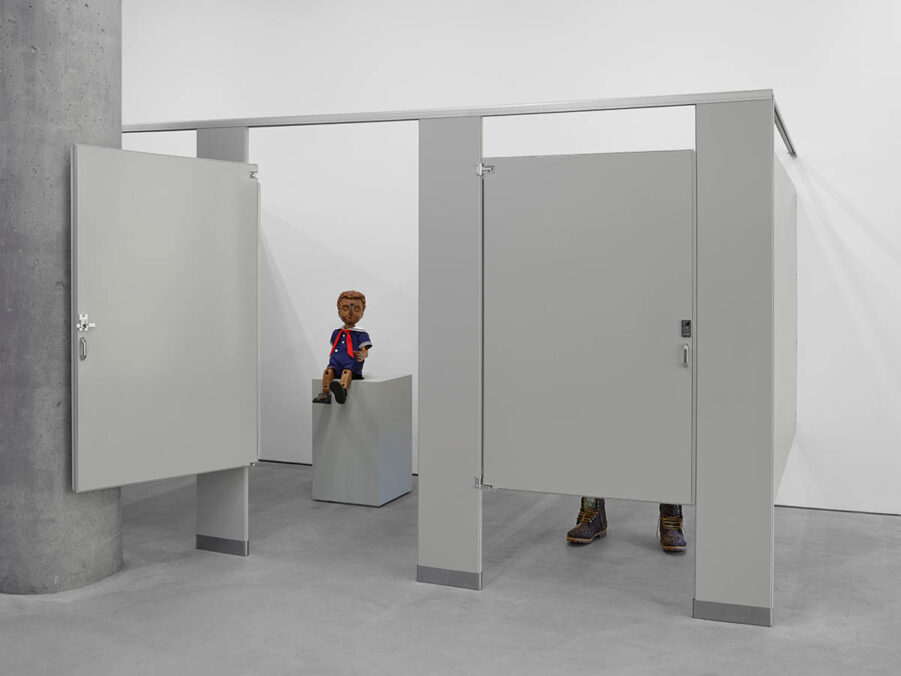
Hughmans coincides with Hayden’s participation in several exhibitions across the United States, including an installation at the deCordova Sculpture Park Museum and a major survey exhibition at Laumeier Sculpture Park in Saint Louis, Missouri, which will travel to Brandeis University’s Rose Art Museum in Massachusetts. The exhibition also precedes Hayden’s exhibition at the Nasher Sculpture Center in Dallas, Texas, opening in September 2024.
About Hugh Hayden. Hugh Hayden’s practice considers the anthropomorphization of the natural world as a visceral lens for exploring the human condition. Hayden transforms familiar objects through a process of selection, carving and juxtaposing to challenge our perceptions of ourselves, others and the environment. Raised in Texas and trained as an architect, his work arises from a deep connection to nature and its organic materials. Hayden utilizes wood as his primary medium, frequently loaded with multi-layered histories in their origin, including objects as varied as discarded trunks, rare indigenous timbers, Christmas trees or souvenir African sculptures. From these he saws, sculpts and sands the wood, often combining disparate species, creating new composite forms that also reflect their complex cultural backgrounds. Crafting metaphors for human existence and past experience, Hayden’s work questions the stasis of social dynamics and asks the viewer to examine their place within an ever-shifting ecosystem.
Hugh Hayden was born in Dallas, Texas in 1983 and lives and works in New York City. He holds an MFA from Columbia University and a Bachelor of Architecture from Cornell University. Hayden’s work has been the subject of numerous exhibitions in the United States and abroad. Recent solo exhibitions include public art installations, ‘Huff and a Puff’, at the deCordova Sculpture Park and Museum, Lincoln, MA (2023), and ‘Brier Patch’, at the Madison Square Park Conservancy in New York, NY, which later travelled to the North Carolina Museum of Art in Raleigh, NC, and Dumbarton Oaks Gardens in Washington, DC. Other solo institutional and gallery exhibitions include ‘Boogey Men’ at Institute of Contemporary Art Miami, Miami, FL, which travelled to the Blaffer Art Museum, Houston, TX; ‘Huey’, Lisson Gallery, New York, NY; ‘Hues’, C L E A R I N G, Brussels, Belgium; ‘Hugh Hayden: American Food’, Lisson Gallery, London, UK; ‘Hugh Hayden: Creation Myths’, Princeton University Art Museum, Princeton, NJ; and ‘Hugh Hayden’, White Columns, New York, NY. Recent group exhibitions include ‘Forest of Dreams: Contemporary Tree Sculpture’, Frederik Meijer Gardens & Sculpture Park, Grand Rapids, MI (2023) and ‘NGV Triennial’, National Gallery of Victoria, Melbourne, Australia (2023).
Exhibition: Hugh Hayden – Hughmans
Exhibition duration: May 2 – August 2, 2024
Location: Lisson Gallery New York space, 508 West 24th St, New York
Lisson Gallery – www.lissongallery.com
About Lisson Gallery. Lisson Gallery is one of the most influential and longest-running international contemporary art galleries in the world. Today the gallery supports and promotes the work of more than 60 international artists across spaces in London, New York, Los Angeles, Shanghai and Beijing. Established in 1967 by Nicholas Logsdail, Lisson Gallery pioneered the early careers of important Minimal and Conceptual artists, such as Art & Language, Carl Andre, Daniel Buren, Donald Judd, John Latham, Sol LeWitt, Richard Long and Robert Ryman among many others. It still works with many of these artists as well as others of that generation from Carmen Herrera to the renowned estates of Leon Polk Smith, Ted Stamm and Roy Colmer. In its second decade the gallery introduced significant British sculptors to the public for the first time, including Tony Cragg, Richard Deacon, Anish Kapoor, Shirazeh Houshiary and Julian Opie. Since 2000, the gallery has gone on to represent many more leading international artists such as Marina Abramović, Ai Weiwei, John Akomfrah, Susan Hiller, Tatsuo Miyajima and Sean Scully. It is also responsible for raising the international profile of a younger generation of artists led by Hugh Hayden, Van Hanos, Cheyney Thompson, Cory Arcangel, Ryan Gander, Haroon Mirza, Laure Prouvost, Pedro Reyes and Wael Shawky.



